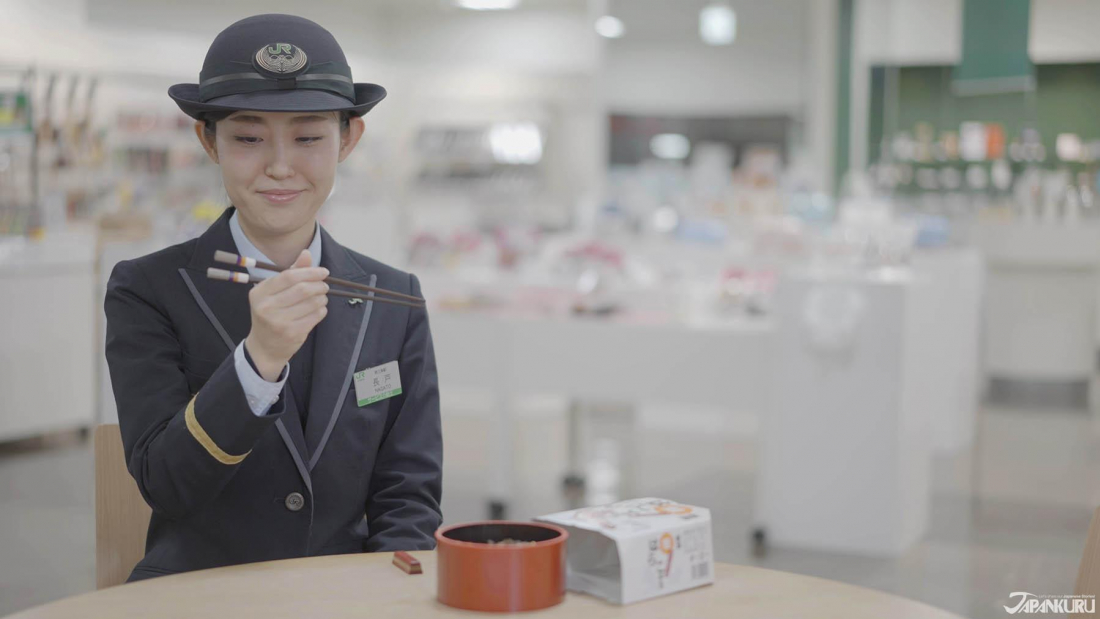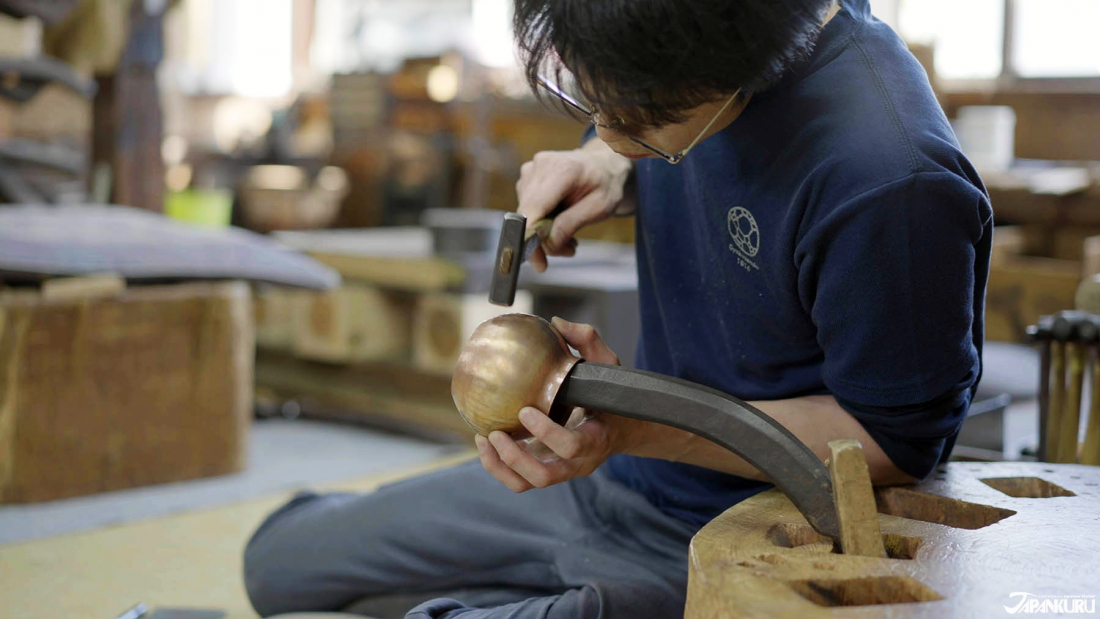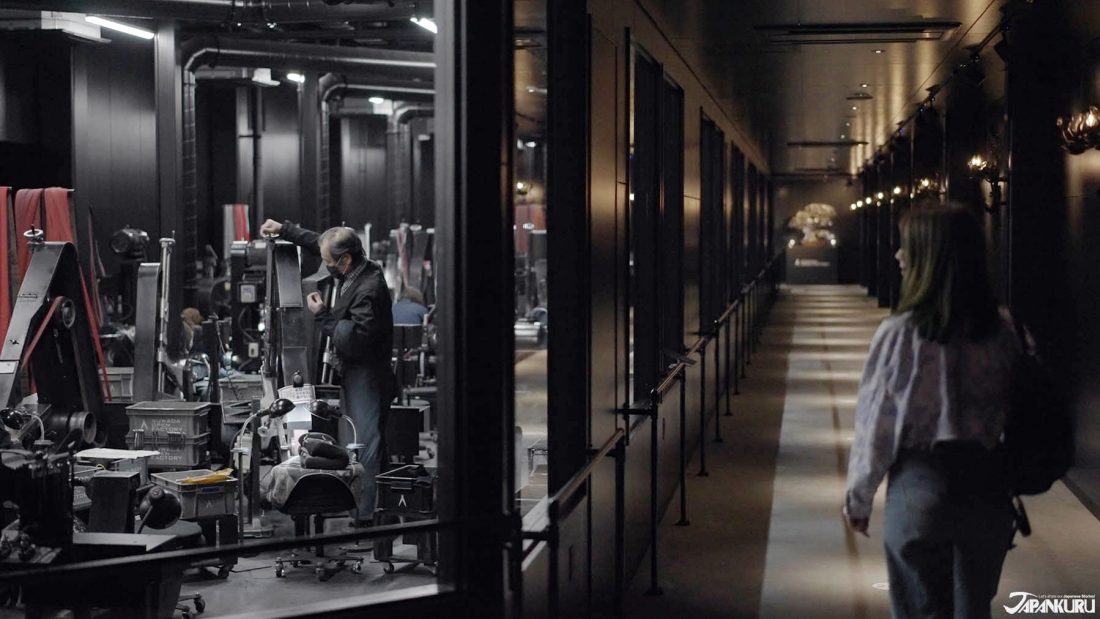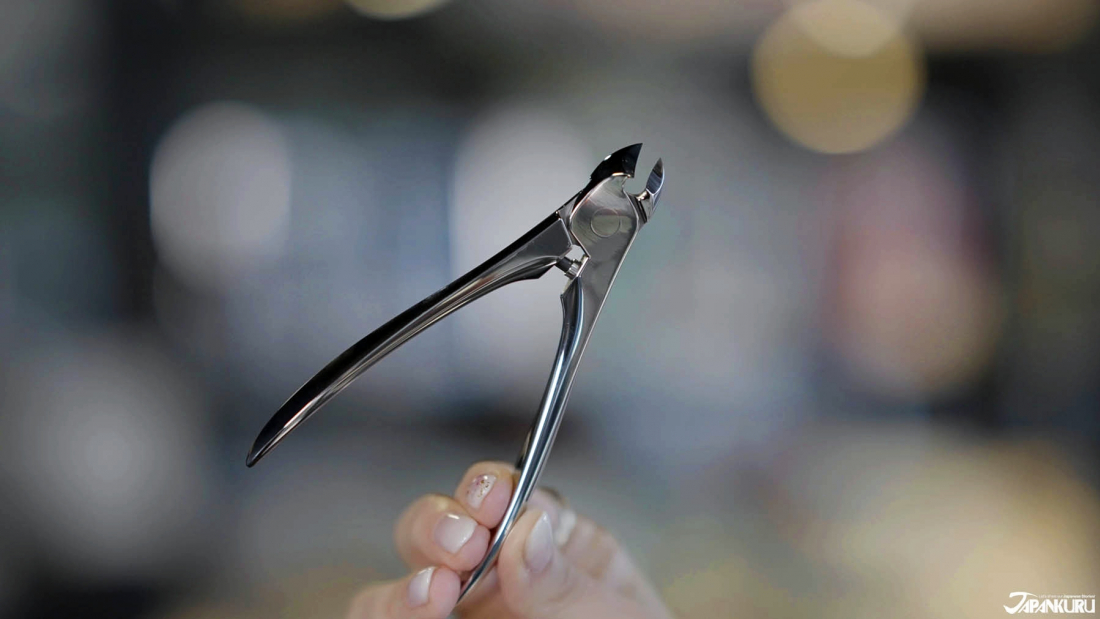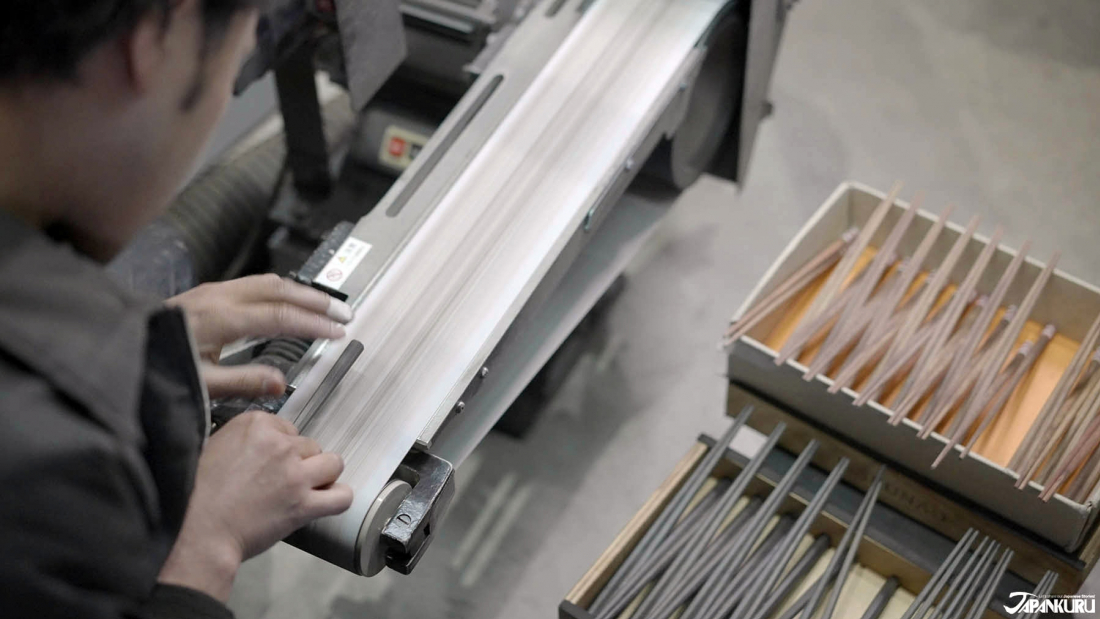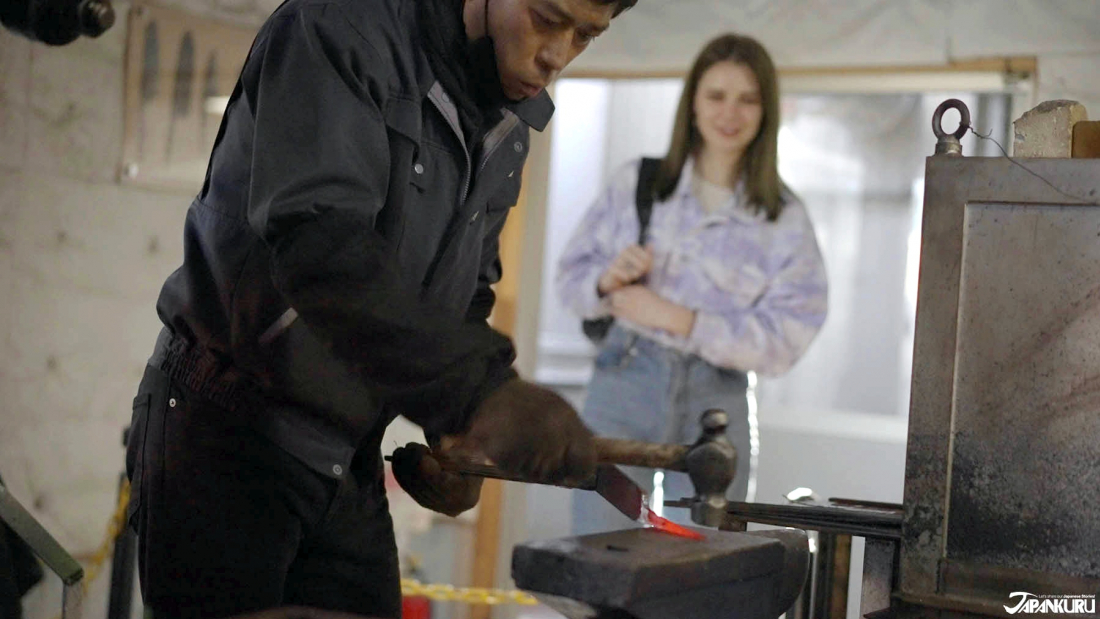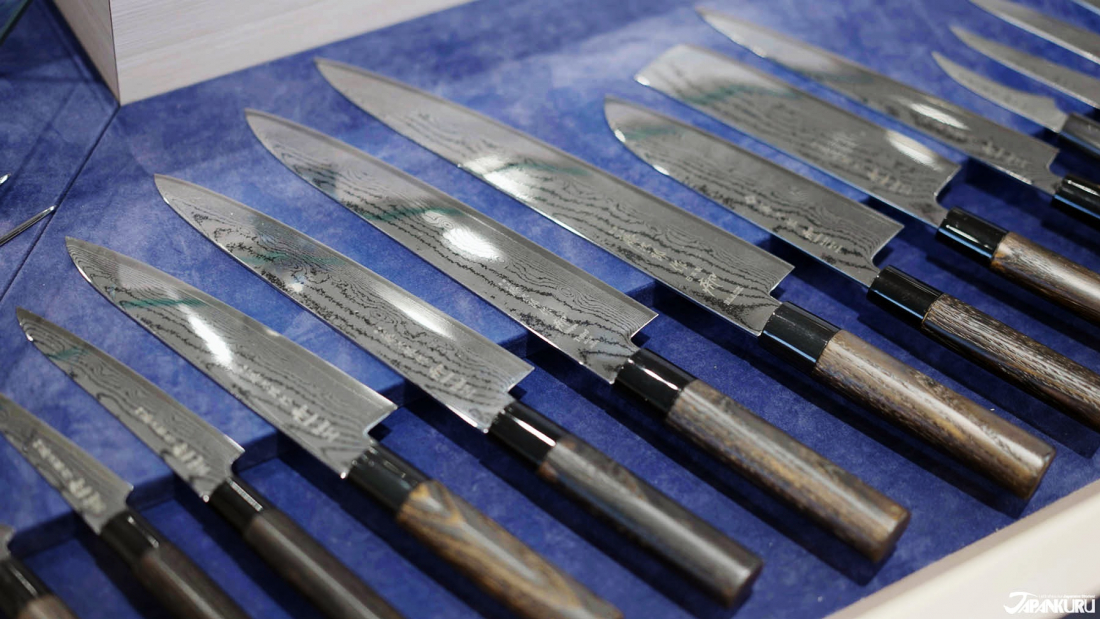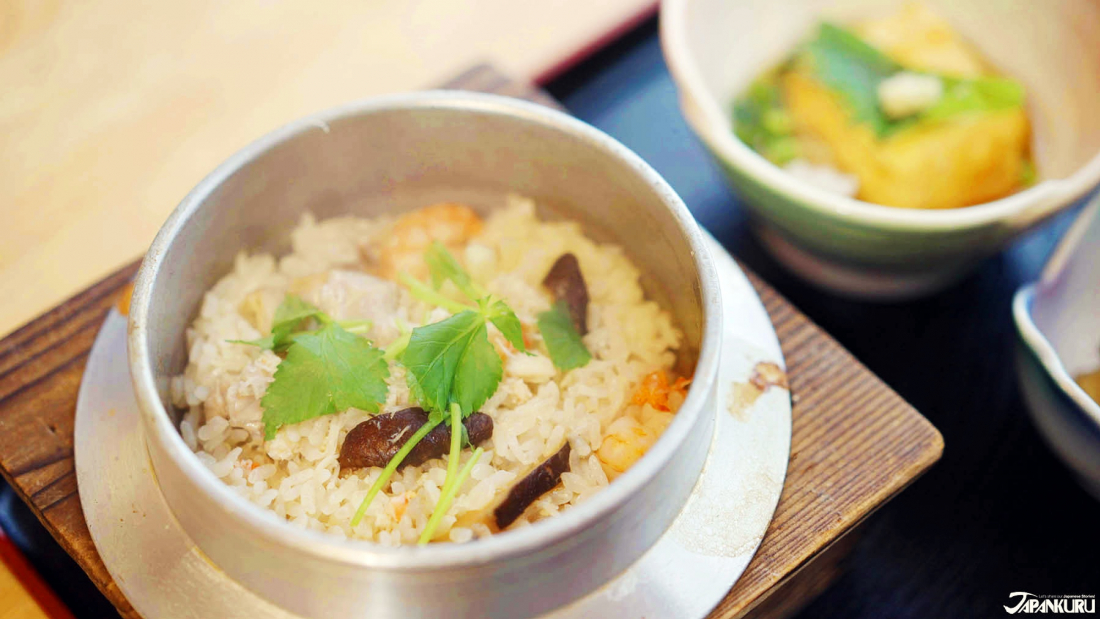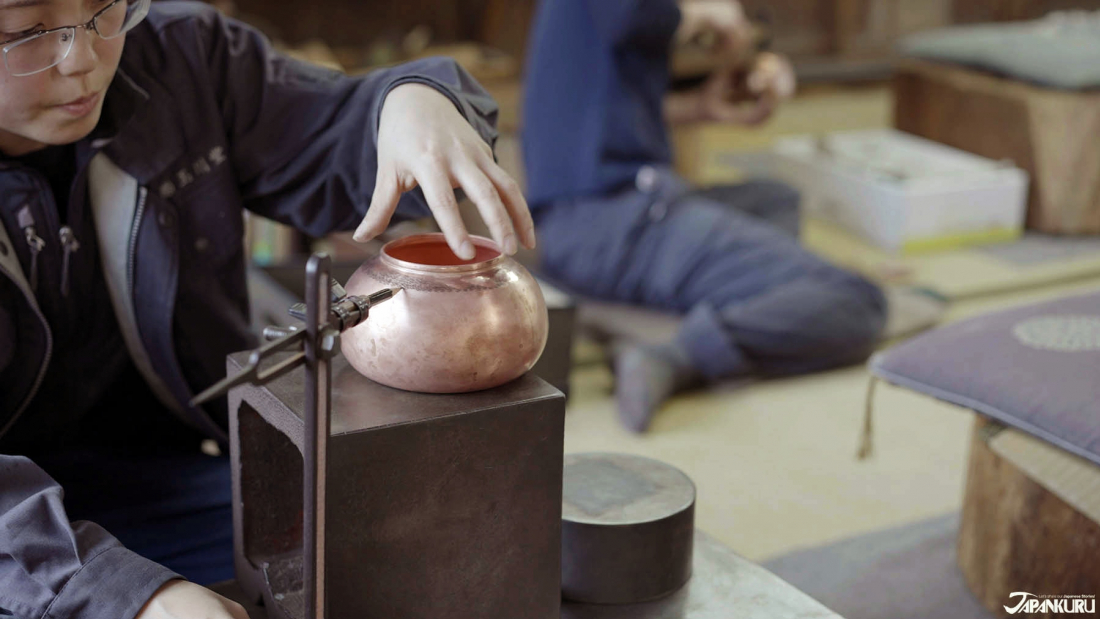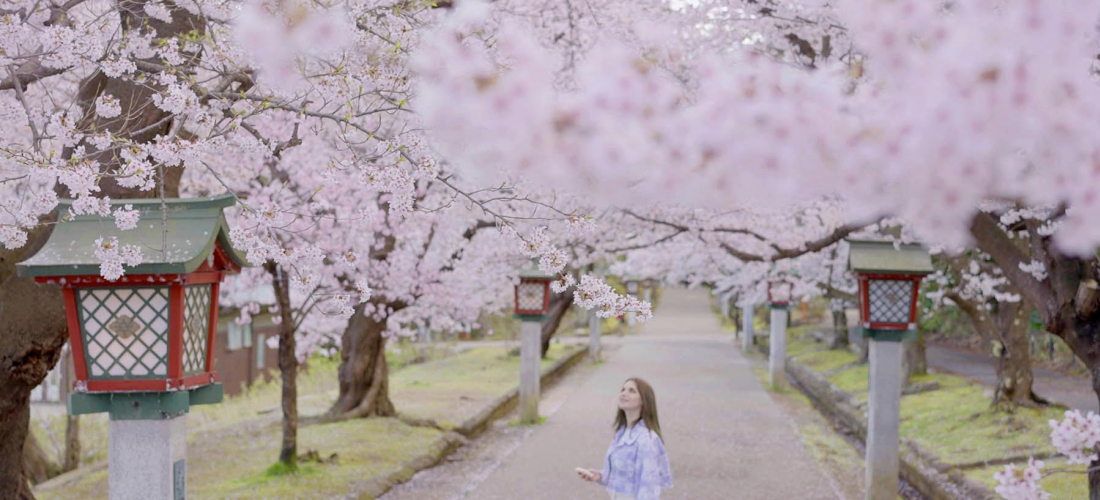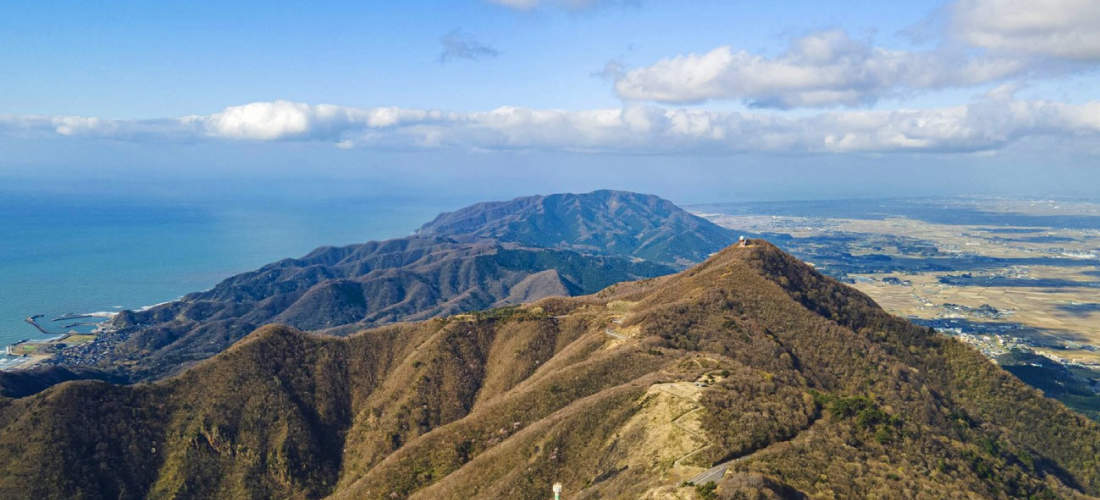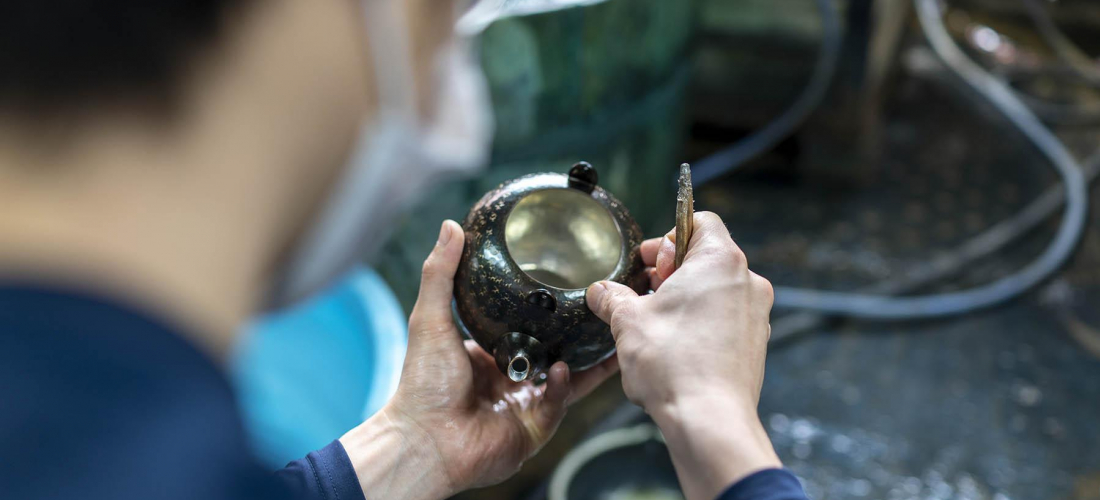
CONTENTS
Join Japankuru on a trip to this lesser-known JR EAST shinkansen station, in a part of Japan where exquisite craftsmanship meets modern artisan elegance. Find out more about the best local spots recommended by the JR EAST staff themselves!
Tsubame & Sanjo: Two Cities of Artisans, Craftsmanship, and Open Factories
Ready to hop on the shinkansen and head into Japan's countryside? Tsubamesanjō Station is uniquely situated on the very border between two small cities in Niigata: Tsubame, and Sanjo. But these two cities share a common past full of artisans and handicrafts, and to this day the area is known as a travel destination thanks to the region's beautiful handmade items, factories that take advantage of both traditional methods and modern advancements, and unique opportunities for visitors to see it all for themselves. From beautiful wooden chopsticks and gently hand-beaten copper teapots, to carefully sharpened clippers and knives, the modern artisans both preserve and improve upon traditions in order to create Japanese masterpieces each and every day, and travelers who visit the "open factories" of Tsubame and Sanjo are treated to a chance to see how it's done!
Getting to Tsubamesanjō Station
As a stop on the JR EAST Jōetsu Shinkansen (bullet train), access to Tsubamesanjō Station is extremely convenient for anyone starting in or around Tokyo! Tsubamesanjō Station is one of a dozen along the train line, which starts from Tokyo Station and stops at Ueno before heading into Niigata Prefecture, and finally arriving in the Tsubame-Sanjo area!
The trip is a little under two hours, which makes this an ideal destination for a weekend away, or a little excursion using a rail pass. The "JR EAST PASS (Nagano, Niigata area)" is especially convenient when heading to Tsubame-Sanjo: for 18,000 yen (tax included), the pass lets you ride all the JR EAST trains you want for five days, including shinkansen and limited express trains, and even some JR buses. From Tokyo to Tsubamesanjō Station, tickets with reserved seats normally cost a little under 19,000 yen round trip, but using the pass means you can freely travel all over Niigata and Nagano during your trip. You don't have to be a short-term traveler in Japan, either. Foreign residents can use the pass too!
JR East
"About JR EAST"
Official Website (en)
"Seat Reservation Service Online for Shinkansen and Limited Express Train in East Japan Region"
JR EAST Train Reservations (en)
Gyokusendo: Hammered-Copper Kettles, Rounded to Perfection
As a region of craftspeople, Tsubame and Sanjo are full of artisans making beautiful items using methods of all kinds, but perhaps no producer represents the area's traditional techniques better than Gyokusendo (玉川堂), where you can tour the workshop to see copper sheets artfully formed into shapely tea kettles. The Tsubame-Sanjo area has been known for metalworking since the beginning of the Edo period (1603-1868), and evidence shows us that locals on Mount Yahiko were mining copper and using it to make decorations for Shinto shrines by the year 1650. The particular method of hammered copperware used at Gyokusendo, called "tsuiki" (鎚起), was brought to the region from the city of Sendai in the late 1700s. After three generations of copper-working, the Tamagawa family finally established the Gyokusendo workshop in 1816.
Throughout the 19th century, Gyokusendo evolved from making simple, everyday copper kettles and teapots, to the high-end artisan items they sell today, gaining recognition from the Japanese imperial family and finding popularity at World Expos along the way. Today, visitors will find Gyokusendo based out of a traditional Japanese building, with a small workshop where artisans spend the day gently tap-tap-tapping away at sheets of copper. Slowly but surely, the flat pieces of metal are rounded and sculpted using hammers, as the workers form elegant shapes and curved spouts seemingly out of nowhere.
Gyokusendo makes and sells a number of different high-end items, including some interesting products produced in collaboration with other workshops around Japan (like copper and glass stemware), and has storefronts in places like Tokyo's ritzy Ginza neighborhood. Despite the high prices, staff say that their best-sellers are undoubtedly their big items like copper kettles and teapots, which might cost between 75,000 and 600,000 yen. But you can't put a price on this traditional workmanship! Whether you can afford to take a piece of tsuiki copperware home with you or not, though, a peek into Gyokusendo's workshop is worth seeing!
Gyokusendo (玉川堂)
2-2-21 Chuodori, Tsubame, Niigata
Official Website (en)
*If you're interested in learning about the workshop in English, try contacting Gyokusendo ahead of time to make sure you visit when their Canadian member of staff is around!
Suwada: Nail Clippers Made to Last a Lifetime
For a more modern take on the Tsubame-Sanjo region's crafting traditions, Suwada specializes in cutting tools, and the company is known for their nail clippers and bonsai shears. Founded in 1926, Suwada's facilities and their products have evolved with the times, and visitors to their modern "open factory" can see how things have changed, while the company still strives to maintain their artisanal attention to detail.
In Japan you can pick up some cheap, flimsy nail clippers at the 100-yen store, while Suwada's hand-crafted clippers cost thousands of yen. So when the current president took over the company as the third generation in this family-owned business, staff will tell you that he decided to show visitors exactly why Suwada nail clippers cost more, and why customers should make such an investment on a mundane, everyday product. In order to show off the workmanship that goes into making these high-quality nail clippers, Suwada opened their factory to the world, and visitors can now walk alongside the factory floor and watch the artisans at work, as they grind edges into sharpened perfection and carefully examine products with jeweler's loupes to make minute corrections.
Apparently, when Suwada first started allowing factory tours, staff were nervous about having observers. But as time went on and they saw the awed and impressed looks on the visitors' faces, the factory workers began to take pride in showing off their work. Now, at least from a visitor's perspective, it seems like the craftspeople are too concentrated on their work to even notice!
Visiting the new Suwada open factory opened in 2020, not only can you see the factory floor in action, but you can also see some impressive metal art made with leftover steel! There's even a little Italian cafe, attached to the workers' cafeteria space, which serves some pretty tasty food. If visiting the factory convinces you to buy some extremely high-quality nail clippers for yourself at the factory shop (like so many members of the Japankuru team), they offer a wide variety in different sizes and metallic finishes. You can bring home some extra high-shine clippers, nail clippers made for babies or pets, kitchen gear, or even some bonsai shears for your house plants.
Suwada Open Factory (諏訪田製作所)
1332 Koanji, Sanjo, Niigata
Official Website (en)
Marunao: Luxury Chopsticks Smoothed to Perfect Points
Similar to Gyokusendo, the history of Marunao has its roots in the construction of Shinto shrines. Founder Naoyoshi Fukuda started his business in 1939 by hand-carving elaborate "pull-along inkpots," which were vital tools in the construction of traditional Japanese buildings. Of course, Marunao has also changed with the times. As traditional construction techniques fell out of common use, the company began to produce a variety of wooden items over the years, before finally finding a niche in the early 2000s, making chopsticks by hand.
Now, Marunao's open factory is sandwiched between a bamboo grove and wide-open fields, and visitors can see huge shipping containers of exotic woods in the parking lot before even going inside. The factory itself is cozy and compact, but the little windowed room that looks in on it is like a mini-museum, with signs all along the wall explaining Marunao's history, their methods, and more. Peeking into the workroom, you can see artisans using high-density wood (like ebony, rosewood, or even "snakewood" from Suriname) and engineered marble, and carefully shaping the rough chunks of material into aesthetically pleasing chopstick shapes, with elegantly pointed tips as thin as 1.5 mm (1/16").
The factory shop next door feels like a luxury boutique, which is only fitting for a high-end manufacturer with a storefront in Paris and a history of partnering with French fashion houses. Marunao is evidently quite popular in the worlds of both haute couture and haute cuisine, and their chopsticks are used at some fairly luxe restaurants around the world, for Japanese food and French food alike. Chat with the staff while you admire the chopsticks and other wooden goods, and you might even hear some rumors of Hollywood's rich and famous dropping in to pick up a pair or two of Marunao's more expensive chopstick sets, which go for upwards of 100,000 yen. Seeing the artisans transform little rods of wood into these beautiful but practical eating utensils, being used around the world, is certainly worth a visit.
Marunao (マルナオ)
1662-1 Yada, Sanjo, Niigata
Official Website (en)
Tojiro: Professional Knives from Traditional Craftsmen and Modern Factories
Tojiro may be the youngest company of these four, but it's no recent addition to the city of Tsubame, either. Tojiro's history reaches back to postwar Japan, when the company actually began by manufacturing machines used in the farming industry. After a couple years of this, Tojiro began to search for products they could make and sell during the cold winter months when demand for farming gear was down, and in the end, they landed on knives. Over the years, as the second generation took over this family business (the third generation now works on the factory floor), Tojiro has become known for making the kind of high-quality kitchen knives favored by professional chefs.
Part of the fun of visiting Tojiro's open factory and touring the different buildings, is that the company makes knives using both traditional techniques and more modern methods. After looking in on one of the large modern factory rooms, where industrial machines help the workers to stamp out knives and sharpen the blades, you can also visit Tojiro's smaller workshop where handcrafted knives are still slowly hammered into shape, heated, and hammered some more.
Looking to bring a new kitchen knife home with you? Unsurprisingly, the staff at the Tojiro factory knife shop are experts in the hundreds of different knives they sell, and they're happy to patiently answer any question you might have about the many blades. Tojiro makes standard Japanese cooking knives and slimmer Western-style chef's knives, but also knives in unusual shapes and sizes you might never have seen before. It's easy to be tempted by the impressively long, rectangular sashimi knives, and some of us on the Japankuru team ended up wavering between the different santoku knife handles for half an hour. Even if you're not planning to make any purchases, it's fascinating just to see everything on offer.
Tojiro (藤次郎)
9-5 Yoshida-Higashisakae, Tsubame, Niigata
Official Website (en)
・Bonus!・ Kamameshi at Shogetsu
Got a new pair of Marunao chopsticks you're dying to try out? Or maybe you're just hungry after a day full of factory tours? We recommend grabbing a bite to eat at Shogetsu, a nearby restaurant specializing in kamameshi (釜飯), a local favorite. Kamameshi is rice cooked in a small metal pot with morsels of meat, vegetables, and simple Japanese flavors like soy sauce or dashi. It all ends up tasting a little reminiscent of fried rice, without all the frying. Shogetsu makes some particularly savory and flavorful kamameshi, and the most popular variety is "gomoku" (五目), which comes mixed with chicken, crab, shrimp, shiitake mushrooms, and bamboo shoots.
Shogetsu (釜飯松月)
227 Sakuramachi, Tsubame, Niigata
Tabelog Page
A Region of Hand-Crafted Traditions
Using centuries-old techniques or modern technology, the artisans and manufacturers of Tsubame-Sanjo are bringing the material culture of Japan to the rest of the world, and by visiting the open factories, you can see it all before your very eyes. Whether you love traditional Japanese culture, artisan crafts, or just exploring brand new parts of Japan's countryside, we recommend you make your way onto the shinkansen, and take a trip to Tsubame-Sanjo!
▲ See the cities brought to life in our Tsubame-Sanjo video!
Tsubamesanjō Station Access
▶ JR EAST Jōetsu Shinkansen Line
・Under 2 hours from Tokyo to Tsubamesanjō Station.
▶ JR EAST Pass (Nagano, Niigata area) Recommended!
・5 days of JR EAST trains, including shinkansen and limited express trains, plus some JR buses for 18,000 yen (tax included).
・Available to foreign travelers and foreign residents.
▶ "About JR EAST"
Official Website (en)
▶ "Seat Reservation Service Online for Shinkansen and Limited Express Train in East Japan Region"
JR EAST Train Reservations (en)
For more info and updates from Japan, check Japankuru for new articles, and don't forget to follow us on twitter, instagram, and facebook!
COMMENT
FEATURED MEDIA
VIEW MORE 
A New Tokyo Animal Destination: Relax & Learn About the World’s Animals in Japan
#pr #japankuru #anitouch #anitouchtokyodome #capybara #capybaracafe #animalcafe #tokyotrip #japantrip #카피바라 #애니터치 #아이와가볼만한곳 #도쿄여행 #가족여행 #東京旅遊 #東京親子景點 #日本動物互動體驗 #水豚泡澡 #東京巨蛋城 #เที่ยวญี่ปุ่น2025 #ที่เที่ยวครอบครัว #สวนสัตว์ในร่ม #TokyoDomeCity #anitouchtokyodome

Shohei Ohtani Collab Developed Products & Other Japanese Drugstore Recommendations From Kowa
#pr #japankuru
#kowa #syncronkowa #japanshopping #preworkout #postworkout #tokyoshopping #japantrip #일본쇼핑 #일본이온음료 #오타니 #오타니쇼헤이 #코와 #興和 #日本必買 #日本旅遊 #運動補充能量 #運動飲品 #ช้อปปิ้งญี่ปุ่น #เครื่องดื่มออกกำลังกาย #นักกีฬา #ผลิตภัณฑ์ญี่ปุ่น #อาหารเสริมญี่ปุ่น

도쿄 근교 당일치기 여행 추천! 작은 에도라 불리는 ‘가와고에’
세이부 ‘가와고에 패스(디지털)’ 하나면 편리하게 이동 + 가성비까지 완벽하게! 필름카메라 감성 가득한 레트로 거리 길거리 먹방부터 귀여움 끝판왕 핫플&포토 스폿까지 총집합!
Looking for day trips from Tokyo? Try Kawagoe, AKA Little Edo!
Use the SEIBU KAWAGOE PASS (Digital) for easy, affordable transportation!
Check out the historic streets of Kawagoe for some great street food and plenty of picturesque retro photo ops.
#pr #japankuru #도쿄근교여행 #가와고에 #가와고에패스 #세이부패스 #기모노체험 #가와고에여행 #도쿄여행코스 #도쿄근교당일치기 #세이부가와고에패스
#tokyotrip #kawagoe #tokyodaytrip #seibukawagoepass #kimono #japantrip

Hirakata Park, Osaka: Enjoy the Classic Japanese Theme Park Experience!
#pr #japankuru #hirakatapark #amusementpark #japantrip #osakatrip #familytrip #rollercoaster #retrôvibes #枚方公園 #大阪旅遊 #關西私房景點 #日本親子旅行 #日本遊樂園 #木造雲霄飛車 #히라카타파크 #สวนสนุกฮิราคาตะพาร์ค

🍵Love Matcha? Upgrade Your Matcha Experience With Tsujiri!
・160년 전통 일본 말차 브랜드 츠지리에서 말차 덕후들이 픽한 인기템만 골라봤어요
・抹茶控的天堂!甜點、餅乾、飲品一次滿足,連伴手禮都幫你列好清單了
・ส่องมัทฉะสุดฮิต พร้อมพาเที่ยวร้านดังในอุจิ เกียวโต
#pr #japankuru #matcha #matchalover #uji #kyoto #japantrip #ujimatcha #matchalatte #matchasweets #tsujiri #말차 #말차덕후 #츠지리 #교토여행 #말차라떼 #辻利抹茶 #抹茶控 #日本抹茶 #宇治 #宇治抹茶 #日本伴手禮 #抹茶拿鐵 #抹茶甜點 #มัทฉะ #ของฝากญี่ปุ่น #ชาเขียวญี่ปุ่น #ซึจิริ #เกียวโต

・What Is Nenaito? And How Does This Sleep Care Supplement Work?
・你的睡眠保健品——認識「睡眠茶氨酸錠」
・수면 케어 서플리먼트 ‘네나이토’란?
・ผลิตภัณฑ์เสริมอาหารดูแลการนอน “Nenaito(ネナイト)” คืออะไร?
#pr #japankuru #sleepcare #japanshopping #nenaito #sleepsupplement #asahi #睡眠茶氨酸錠 #睡眠保健 #朝日 #l茶胺酸 #日本藥妝 #日本必買 #일본쇼핑 #수면 #건강하자 #네나이토 #일본영양제 #อาหารเสริมญี่ปุ่น #ช้อปปิ้งญี่ปุ่น #ร้านขายยาญี่ปุ่น #ดูแลตัวเองก่อนนอน #อาซาฮิ

Japanese Drugstore Must-Buys! Essential Items from Hisamitsu® Pharmaceutical
#PR #japankuru #hisamitsu #salonpas #feitas #hisamitsupharmaceutical #japanshopping #tokyoshopping #traveltips #japanhaul #japantrip #japantravel

Whether you grew up with Dragon Ball or you just fell in love with Dragon Ball DAIMA, you'll like the newest JINS collab. Shop this limited-edition Dragon Ball accessory collection to find some of the best Dragon Ball merchandise in Japan!
>> Find out more at Japankuru.com! (link in bio)
#japankuru #dragonball #dragonballdaima #animecollab #japanshopping #jins #japaneseglasses #japantravel #animemerch #pr

This month, Japankuru teamed up with @official_korekoko to invite three influencers (originally from Thailand, China, and Taiwan) on a trip to Yokohama. Check out the article (in Chinese) on Japankuru.com for all of their travel tips and photography hints - and look forward to more cool collaborations coming soon!
【橫濱夜散策 x 教你怎麼拍出網美照 📸✨】
每次來日本玩,是不是都會先找旅日網紅的推薦清單?
這次,我們邀請擁有日本豐富旅遊經驗的🇹🇭泰國、🇨🇳中國、🇹🇼台灣網紅,帶你走進夜晚的橫濱!從玩樂路線到拍照技巧,教你怎麼拍出最美的夜景照。那些熟悉的景點,換個視角說不定會有新發現~快跟他們一起出發吧!
#japankuru #橫濱紅磚倉庫 #汽車道 #中華街 #yokohama #japankuru #橫濱紅磚倉庫 #汽車道 #中華街 #yokohama #yokohamaredbrickwarehouse #yokohamachinatown

If you’re a fan of Vivienne Westwood's Japanese designs, and you’re looking forward to shopping in Harajuku this summer, we’ve got important news for you. Vivienne Westwood RED LABEL Laforet Harajuku is now closed for renovations - but the grand reopening is scheduled for July!
>> Find out more at Japankuru.com! (link in bio)
#japankuru #viviennewestwood #harajuku #omotesando #viviennewestwoodredlabel #viviennewestwoodjapan #비비안웨스트우드 #오모테산도 #하라주쿠 #日本購物 #薇薇安魏斯伍德 #日本時尚 #原宿 #表參道 #japantrip #japanshopping #pr

Ready to see TeamLab in Kyoto!? At TeamLab Biovortex Kyoto, the collective is taking their acclaimed immersive art and bringing it to Japan's ancient capital. We can't wait to see it for ourselves this autumn!
>> Find out more at Japankuru.com! (link in bio)
#japankuru #teamlab #teamlabbiovortex #kyoto #kyototrip #japantravel #artnews
Photos courtesy of teamLab, Exhibition view of teamLab Biovortex Kyoto, 2025, Kyoto ® teamLab, courtesy Pace Gallery

Japanese Makeup Shopping • A Trip to Kamakura & Enoshima With Canmake’s Cool-Toned Summer Makeup
#pr #canmake #enoshima #enoden #에노시마 #캔메이크 #japanesemakeup #japanesecosmetics

⚔️The Robot Restaurant is gone, but the Samurai Restaurant is here to take its place. Check it out, and don't forget your coupon!
🍣신주쿠의 명소 로봇 레스토랑이 사무라이 레스토랑으로 부활! 절찬 쿠폰 발급중
💃18歲以上才能入場的歌舞秀,和你想的不一樣!拿好優惠券去看看~
#tokyo #shinjuku #samurairestaurant #robotrestaurant #tokyotrip #도쿄여행 #신주쿠 #사무라이레스토랑 #이색체험 #할인이벤트 #歌舞伎町 #東京景點 #武士餐廳 #日本表演 #日本文化體驗 #japankuru #japantrip #japantravel #japanlovers #japan_of_insta

Japanese appliance & electronics shopping with our KOJIMA x BicCamera coupon!
用JAPANKURU的KOJIMA x BicCamera優惠券買這些正好❤️
코지마 x 빅 카메라 쿠폰으로 일본 가전 제품 쇼핑하기
#pr #japankuru #japanshopping #kojima #biccamera #japaneseskincare #yaman #dji #osmopocket3 #skincaredevice #日本購物 #美容儀 #相機 #雅萌 #日本家電 #일본여행 #면세 #여행꿀팁 #일본쇼핑리스트 #쿠폰 #일본쇼핑 #일본브랜드 #할인 #코지마 #빅카메라 #japankurucoupon

